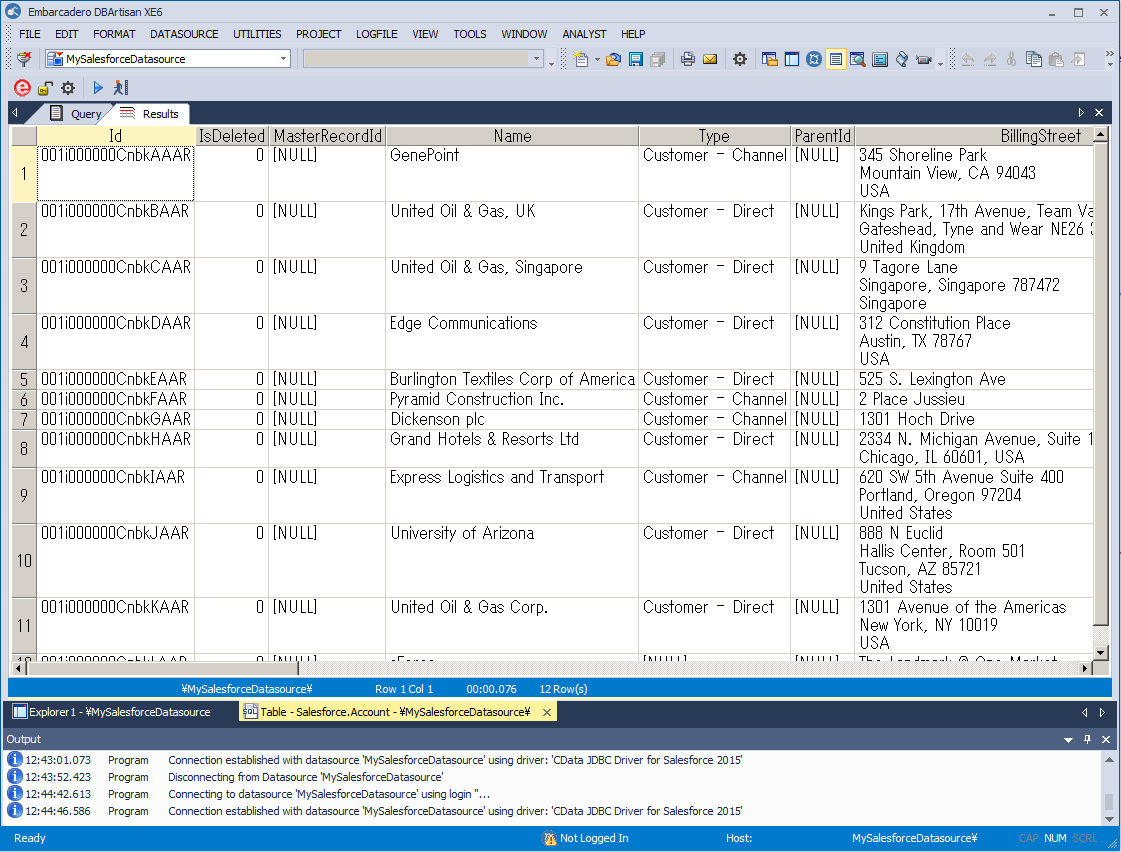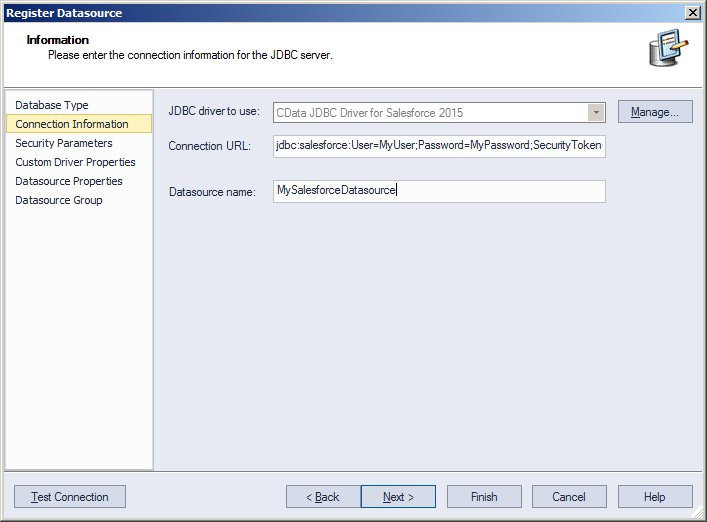Discover how a bimodal integration strategy can address the major data management challenges facing your organization today.
Get the Report →Manage Azure Data Lake Storage Data in DBArtisan as a JDBC Source
Use wizards in DBArtisan to create a JDBC data source for Azure Data Lake Storage.
The CData JDBC Driver for Azure Data Lake Storage seamlessly integrates Azure Data Lake Storage data into database management tools like DBArtisan by enabling you to access Azure Data Lake Storage data as a database. This article shows how to create a JDBC source for Azure Data Lake Storage in DBArtisan. You can then edit data visually and execute standard SQL.
Integrate Azure Data Lake Storage Data into DBArtisan Projects
Follow the steps below to register Azure Data Lake Storage data as a database instance in your project:
- In DBArtisan, click Data Source -> Register Datasource.
- Select Generic JDBC.
- Click Manage.
- In the resulting dialog, click New. Enter a name for the driver and click Add. In the resulting dialog, navigate to the driver JAR. The driver JAR is located in the lib subfolder of the installation directory.
![The JDBC driver definition in the Register Datasource wizard. (Salesforce is shown.)]()
-
In the Connection URL box, enter credentials and other required connection properties in the JDBC URL.
Authenticating to a Gen 1 DataLakeStore Account
Gen 1 uses OAuth 2.0 in Azure AD for authentication.
For this, an Active Directory web application is required. You can create one as follows:
To authenticate against a Gen 1 DataLakeStore account, the following properties are required:
- Schema: Set this to ADLSGen1.
- Account: Set this to the name of the account.
- OAuthClientId: Set this to the application Id of the app you created.
- OAuthClientSecret: Set this to the key generated for the app you created.
- TenantId: Set this to the tenant Id. See the property for more information on how to acquire this.
- Directory: Set this to the path which will be used to store the replicated file. If not specified, the root directory will be used.
Authenticating to a Gen 2 DataLakeStore Account
To authenticate against a Gen 2 DataLakeStore account, the following properties are required:
- Schema: Set this to ADLSGen2.
- Account: Set this to the name of the account.
- FileSystem: Set this to the file system which will be used for this account.
- AccessKey: Set this to the access key which will be used to authenticate the calls to the API. See the property for more information on how to acquire this.
- Directory: Set this to the path which will be used to store the replicated file. If not specified, the root directory will be used.
Built-in Connection String Designer
For assistance in constructing the JDBC URL, use the connection string designer built into the Azure Data Lake Storage JDBC Driver. Either double-click the JAR file or execute the jar file from the command-line.
java -jar cdata.jdbc.adls.jarFill in the connection properties and copy the connection string to the clipboard.
![Required JDBC connection properties in the Register Datasource wizard. (Salesforce is shown.)]()
Below is a typical connection string:
jdbc:adls:Schema=ADLSGen2;Account=myAccount;FileSystem=myFileSystem;AccessKey=myAccessKey;InitiateOAuth=GETANDREFRESH - Finish the wizard to connect to Azure Data Lake Storage data. Azure Data Lake Storage entities are displayed in the Datasource Explorer.
You can now work with Azure Data Lake Storage data as you work with any other database. See the driver help documentation for more information on the queries supported by the Azure Data Lake Storage API.









